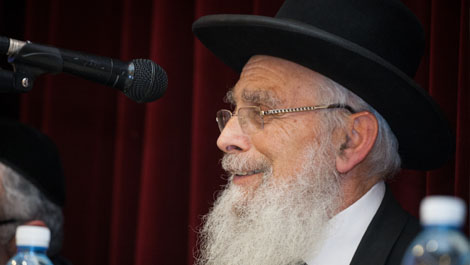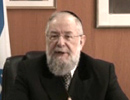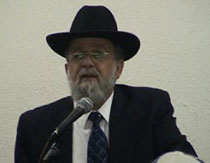Beit Midrash
- Torah Portion and Tanach
- Shmot
- Ki Tisa
- Sections
- Chemdat Yamim
- Parashat Hashavua
The covering of the face is also a theme in the recently read Megillat Esther. There were seven important officers who were described as "those who would see the king’s face" (Esther 1: 9, 14). One of the keys to the Jews’ success in the Purim story is Mordechai’s uncovering of the plot of Bigtan and Teresh to assassinate the king. One can prove from Yirmiyah 35:4 that these would-be murderers were very high ranking officers as well.
A similar story with a different ending occurred in Assyria. As we know from our sources (Melachim II, 19:37), King Sancheriv was killed by his sons, Adarmelech and Sharetzer, in an attempted coup that ended with a third son receiving the throne. A fascinating document was uncovered from the Assyrian royal archive some years ago, which also relates to our concept of face covering. A simple citizen uncovered the princes’ plot and wanted to warn Sancheriv. He went to the palace and asked for an urgent meeting with the king. However, the king was too busy and thus passed the job over to his son, the assassin. According to the practice of the time, simple people were not allowed to see the king’s face and so the unsuspecting citizen did not see that he was telling the story to the subject of his story. The latter revealed himself to the tattle-tale and had him killed before killing his father. At the end, the assassination was successful but the takeover of the leadership was not. The archive document dealt with compensation to the family of the unfortunate citizen, who had risked his life for the king’s welfare.
In any case, we see that one has to have a high station to see the face of the king. Now, we can understand better the imagery we have seen. Being able or not being able to see Hashem is a strong indication of the people’s closeness to Him. In regard to Moshe as well, the fact that his face was covered from them, was a way of demonstrating that the people had dipped below the level where they could interact directly with their humble, but holy and untainted, leader.
May we merit being among those who get to see the face of the King!

Gold, Silver, Precious Stones – Closeness to Hashem – part III
Rabbi Yossef Carmel | Adar 5785
Moshe on Mt. Sinai: First Get to Work!
Rabbi Yehuda Roth | 20 Adar 5784

The Brave of Strength Who Do His Will
Rabbi Yossef Carmel | 5768
























